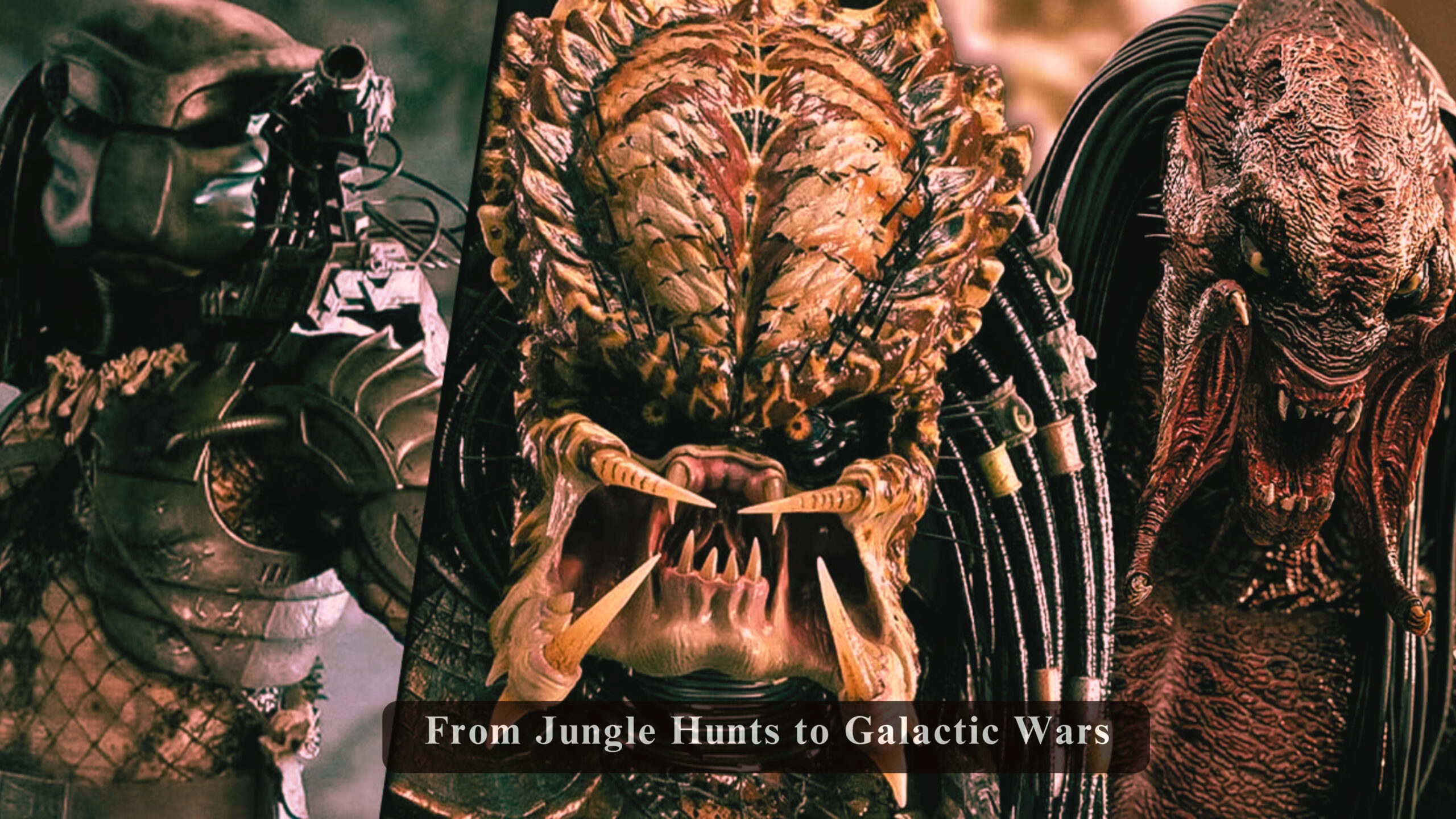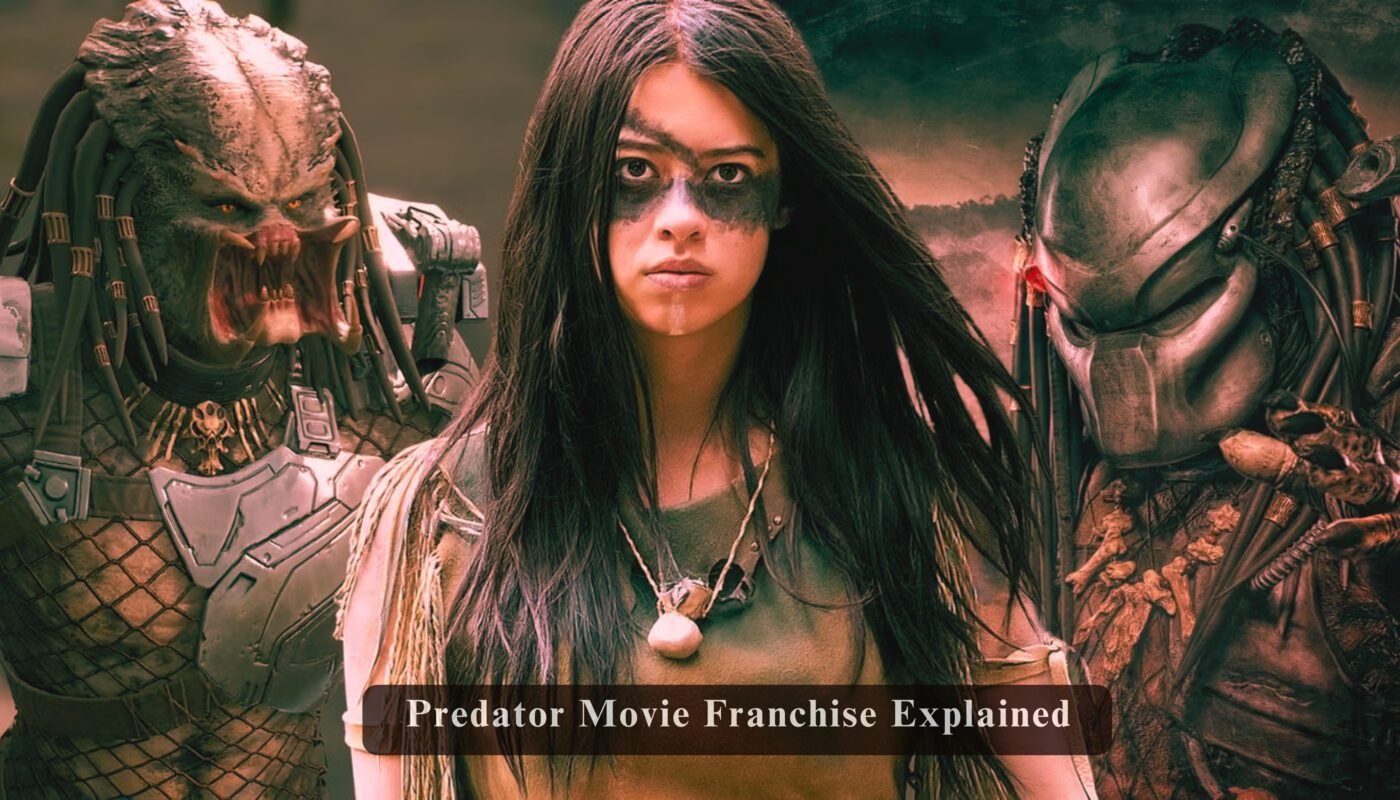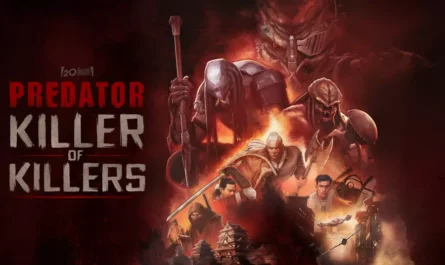As a 25-year-old movie blogger who’s grown up on the raw thrill of science fiction and action films, few franchises have stuck with me like the Predator series. Over the decades, Predator has transformed from a simple man-versus-alien thriller to an intergalactic saga filled with rich lore, brutal warfare, and deep cultural mythology. In this comprehensive post, I’ll break down the entire Predator movie franchise explained in every detail: its origins, chronological storyline, film-by-film analysis, connections to Alien, hidden lore, Yautja culture, and future possibilities.
Whether you’re a long-time fan or a newcomer who wants to catch up before diving into the latest film, Predator: Killer of Killers, this post will serve as your complete guide.
The Birth of a Hunter: 1987’s Predator
Predator Movie Franchise Explained Let’s start where it all began. The original Predator (1987), directed by John McTiernan, starred Arnold Schwarzenegger as Dutch, the leader of a special ops team on a mission in the Central American jungle. But instead of finding guerrilla enemies, they’re stalked by an alien hunter who picks them off one by one.
This film introduced the Predator, or Yautja as later expanded, as a perfect sci-fi monster—strong, stealthy, and ritualistic. With cutting-edge visual effects and a unique mix of action and horror, Predator became an instant classic.
Key Elements Introduced:
Predator cloaking technology
Heat vision
Trophy hunting
The code of honorable combat
First glimpse of Predator’s physical features
Why It Matters: This film laid the foundation of the franchise’s mythology and set a tone of man-versus-monster that would echo throughout cinema.
Expanding the World: Predator 2 (1990)
Predator movie franchise explained wouldn’t be complete without discussing its shift from jungle to city. Set in Los Angeles, Predator 2 stars Danny Glover as LAPD Lieutenant Harrigan facing off against a new Predator wreaking havoc during a gang war.
The film dives deeper into Predator culture, technology, and goals. In the climax, Harrigan boards the Predator ship and sees a trophy room containing skulls—including a Xenomorph skull—linking the Predator and Alien franchises.
Key Elements:
Predator hunting in urban environments
Introduction of Predator spaceship
Elder Predators and tribal hierarchy
Trophy room with Easter eggs
Why It Matters: It opens up the larger universe, showing Predators have been hunting on Earth for centuries and don’t just operate in jungles.
The Crossover Era: Alien vs. Predator (2004) and AVP: Requiem (2007)
These two films take the Predator Movie Franchise Explained series in a new direction. While critically divisive, they added massive lore value.
AVP (2004): Set in Antarctica, it introduces the idea that Predators have used Earth as a hunting ground for millennia. Humans were once worshippers who helped build temples for the Predator’s ritual hunts against Xenomorphs.
AVP: Requiem (2007): A direct sequel, it shows a Predalien hybrid being born and a cleanup Predator sent to erase the evidence. This film leaned more into horror and chaos in a small-town setting.
Key Elements:
Predator vs. Xenomorph lore
The blooded ritual (coming-of-age hunts)
Hybrid monsters
Predator homeworld glimpses
Why It Matters: Even though these Predator Movie Franchise Explained aren’t always considered canon by purists, they’re essential for explaining Predator culture, traditions, and crossover potential.
Reinvention with Predators (2010)
Directed by Nimród Antal and produced by Robert Rodriguez, Predators returned the franchise to its roots: humans hunted in a jungle—but with a twist. This time, the jungle is an alien planet, and the prey are Earth’s deadliest individuals.
Key revelations:
There are multiple Predator clans
Super Predators (genetically enhanced)
Predator-on-Predator conflict
Characters like Royce (Adrien Brody) and Isabelle (Alice Braga) survive using strategy and an understanding of Predator behavior. The movie hints at a larger war brewing between different Yautja factions.
Why It Matters: It expands the scope beyond Earth and shows that Predators themselves have internal conflicts and evolution.
Modern Reboot: The Predator (2018)
Shane Black’s The Predator aimed to reboot the franchise for a new audience while maintaining continuity. It introduces a plot involving genetically upgraded Predator Movie Franchise Explained and military experiments.
Key Concepts:
Genetic hybridization
Predator translator tech
Autism as an evolutionary advantage
Government cover-ups
The film’s ending teases the creation of a “Predator Killer” suit, potentially setting up a human counterforce to the Yautja.
Why It Matters: Though met with mixed reviews, it laid groundwork for future human-Predator tech warfare.
Prequel Surprise: Prey (2022)
Set in 1719, Prey flips the script by focusing on a Native American protagonist, Naru, who faces an early version of the Predator. This stripped-down film emphasizes survival and traditional tracking skills.
Key Highlights:
Predator vs. Native weaponry
Earliest known Predator visit to Earth
Feminist and indigenous empowerment themes
Retelling of the hunter-hunted formula
Why It Matters: It showed the versatility of the franchise, proving Predator stories can exist in any time period.
The Latest Evolution: Predator: Killer of Killers (2025)

The newest entry brings all elements full circle. Advanced Yautja tech, intergalactic politics, references to AVP and Predator 2, and a post-credit scene teasing a “harbinger” even the Predators fear. It’s a lore-rich, violent return to form.
Key Elements:
Yautja High Council
Human-Predator cooperation
Lore Keepers and Tech Forgers
Post-credit tease of a galactic war
Why It Matters: This film unifies nearly every previous installment while opening doors to massive expansion.
Timeline of the Franchise (Chronological Order)
Prey (2022) – Set in 1719
Alien vs. Predator (2004) – Flashbacks to ancient hunts
Predator (1987) – First human military encounter
Predator 2 (1990) – Urban hunt in 1997 LA
AVP: Requiem (2007) – Modern-day chaos
Predators (2010) – Alien planet hunting grounds
The Predator (2018) – Hybrid tech and suit
Predator: Killer of Killers (2025) – Full-universe expansion
Yautja Culture: The Backbone of the Franchise
Understanding Predator society is key to appreciating the films:
The Code: Predators only hunt worthy prey and refuse to attack the unarmed or pregnant.
Clan Hierarchies: Elders lead clans, and young Predators must earn status through ritual hunts.
Technology: Advanced weapons (plasma casters, cloaks, discs), but used with honor.
Trophies: Skulls are collected as status symbols.
The Predator movie franchise explained through this cultural lens shows it’s not just about action—it’s about tradition, respect, and status.
Connections to the Alien Universe
Ever since that Xenomorph skull in Predator 2, fans have speculated about canon status.
In AVP, we learn:
Predators seeded Earth with Xenomorphs
They trained by hunting them
Humans were once part of their rituals
Though timelines are debated, many fans accept AVP as a soft-canon branch, helping explain Predator evolution.
Hidden Lore and Recurring Themes
Heat Vision POV: A constant feature in every movie.
Mimicry: Predators record and repeat human voices—always creepy.
Self-Destruct: An honorable end when defeated.
Mask Removal: Often signals a final confrontation.
Skull Trophy Ritual: Seen in every film.
These small details are the backbone of the franchise’s identity.
What the Future Holds
With Predator Movie Franchise Explained laying down the groundwork for a galactic war, here are potential next steps:
Predator Civil War: Super Predators vs. traditionalists.
Human Alliances: Fighters like Dutch’s descendants or Royce forming a resistance.
Female Predators: Yet to be explored fully.
Return to Past Timelines: Medieval or Roman-era hunts.
Conclusion: The Legacy of the Hunt
The Predator Movie Franchise Explained in its entirety reveals something far more complex than alien violence. It’s about ritual, honor, survival, and legacy. From 1987’s jungle battlefield to the looming interstellar war teased in Killer of Killers, this franchise has continuously evolved.
And it’s not done yet.
As a lifelong fan and movie blogger, I can confidently say: the hunt has only just begun.




